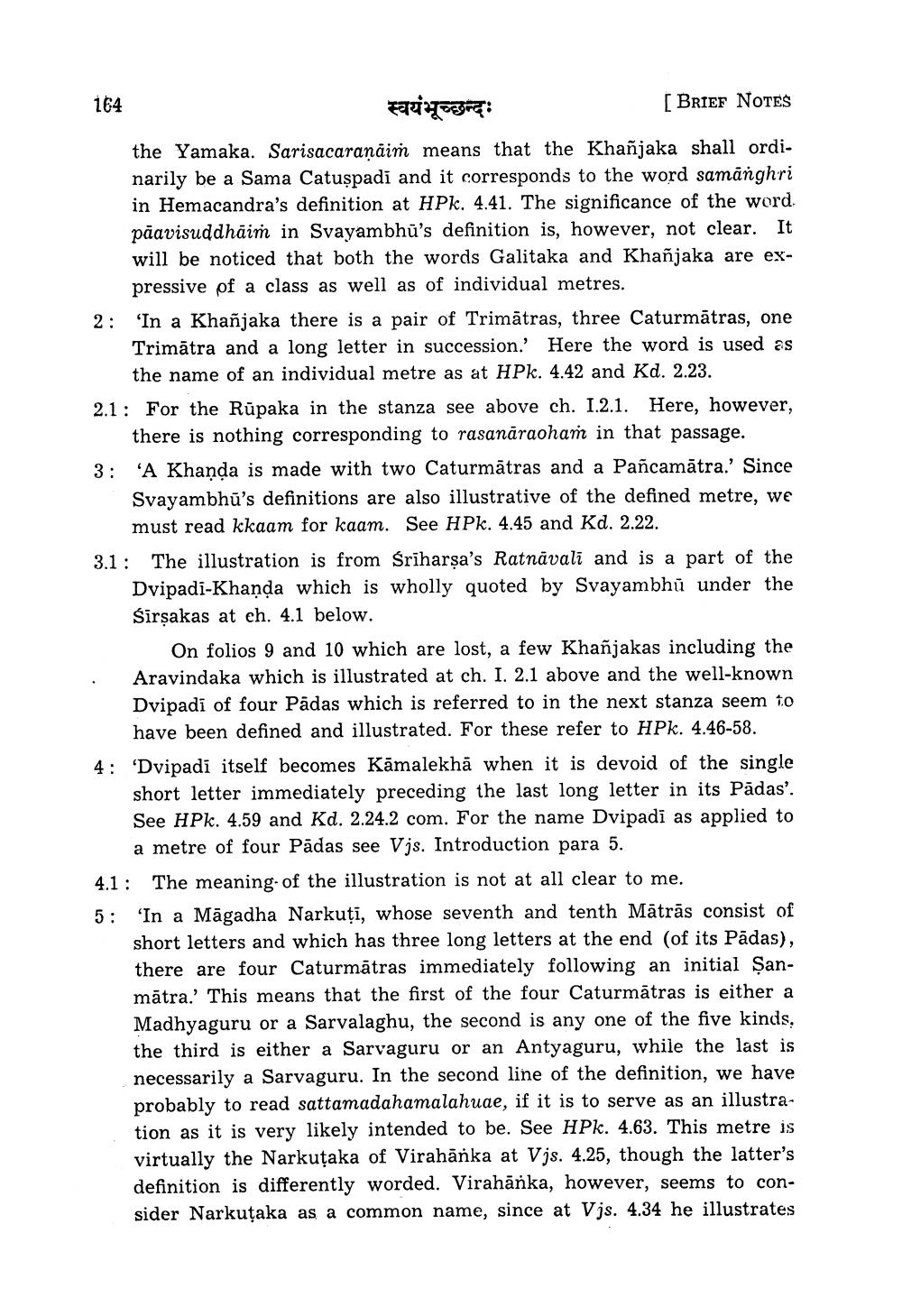________________
164 स्वयंभूच्छन्दः
[ BRIEF NOTES the Yamaka. Sarisacaranáir means that the Khañjaka shall ordinarily be a Sama Catuspadi and it corresponds to the word samanghri in Hemacandra's definition at HPk. 4.41. The significance of the word. pāavisuddhāim in Svayambhu's definition is, however, not clear. It will be noticed that both the words Galitaka and Khañjaka are ex
pressive of a class as well as of individual metres. 2: 'In a Khañjaka there is a pair of Trimātras, three Caturmātras, one
Trimātra and a long letter in succession.' Here the word is used as
the name of an individual metre as at HPk. 4.42 and Kd. 2.23. 2.1: For the Rūpaka in the stanza see above ch. I.2.1. Here, however,
there is nothing corresponding to rasanāraohař in that passage. 3: 'A Khanda is made with two Caturmātras and a Pañcamātra.' Since
Svayambhū's definitions are also illustrative of the defined metre, we
must read kkaam for kaam. See HPk. 4.45 and Kd. 2.22. 3.1: The illustration is from Sriharşa's Ratnávali and is a part of the
Dvipadi-Khanda which is wholly quoted by Svayambhū under the Śirsakas at eh. 4.1 below.
On folios 9 and 10 which are lost, a few Khañjakas including the Aravindaka which is illustrated at ch. I. 2.1 above and the well-known Dvipadi of four Pādas which is referred to in the next stanza seem to
have been defined and illustrated. For these refer to HPk. 4.46-58. 4: 'Dvipadi itself becomes Kāmalekhā when it is devoid of the single
short letter immediately preceding the last long letter in its Pādas'. See HPk. 4.59 and Kd. 2.24.2 com. For the name Dvipadi as applied to
a metre of four Pādas see Vjs. Introduction para 5. 4.1: The meaning of the illustration is not at all clear to me. 5: 'In a Māgadha Narkuti, whose seventh and tenth Mātrās consist of
short letters and which has three long letters at the end (of its Pādas), there are four Caturmātras immediately following an initial Şanmātra.' This means that the first of the four Caturmātras is either a Madhyaguru or a Sarvalaghu, the second is any one of the five kinds, the third is either a Sarvaguru or an Antyaguru, while the last is necessarily a Sarvaguru. In the second line of the definition, we have probably to read sattamadahamalahuae, if it is to serve as an illustration as it is very likely intended to be. See HPk. 4.63. This metre is virtually the Narkutaka of Virahānka at Vjs. 4.25, though the latter's definition is differently worded. Virahānka, however, seems to consider Narkutaka as a common name, since at Vjs. 4.34 he illustrates




